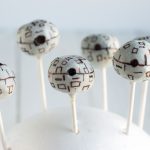
Psychedelic compounds, such as psilocybin found in “magic mushrooms,” are garnering interest for their potential to treat depression. Studies suggest that psilocybin can offer relief for individuals grappling with major depressive disorders, often where conventional treatments have had limited success. Its mechanism involves acting on serotonin receptors in the brain, which can lead to altered perception and mood. Although not fully understood, these changes are believed to contribute to its therapeutic benefits.
Clinical research on psilocybin therapy shows promise in its capacity to provide rapid and sustained antidepressant effects. In controlled settings, with medical supervision, patients experiencing treatment-resistant depression have reported significant improvements. These findings have spurred discussions about integrating psychedelic therapy into mental health treatments, considering the careful administration of these substances and thorough patient support.
As regulatory bodies begin to re-evaluate the legal status of psychedelics, there is a growing movement to consider these drugs beyond their historical recreational use. Researchers emphasize that while results are encouraging, further studies are essential to understand the long-term implications and establish safe, effective treatment protocols for those suffering from depression.
Historical Use of Magic Mushrooms
Magic mushrooms have played a role in human cultures for thousands of years, primarily for their psychoactive properties. This historical use includes both ceremonial and medicinal applications.
Cultural Significance
In various cultures, the ingestion of magic mushrooms, specifically those containing the psychoactive compound psilocybin, was integral to religious and spiritual ceremonies. For instance, the indigenous Mazatec people of Oaxaca, Mexico, used these fungi in healing rituals and divinatory practices. Psilocybe mushrooms were often termed “flesh of the gods,” reflecting their sacred status.
Ancient Practices
Records and archaeological evidence suggest that the use of psilocybin mushrooms dates back to 9000 BC, with rock paintings in Saharan Africa depicting mushroom-like figures. Moreover, in Central and South America, artifacts—such as mushroom stones dating from 1000 to 500 BC—hint at the ceremonial use of these substances by ancient Mayan and Aztec civilizations. These ancient practices valued magic mushrooms for their ability to induce altered states of consciousness, and they were often restricted to religious elites or healers.
Scientific Research on Psilocybin
Scientific evaluations of psilocybin, a compound found in “magic mushrooms,” show significant potential in treating depression. Rigorous studies have been conducted to understand its therapeutic effects and biological mechanisms.
Clinical Trials
Clinical trials of psilocybin for depression have produced promising results. In a study published in JAMA Psychiatry, 24 participants with major depressive disorder received two doses of psilocybin with supportive psychotherapy. Results indicated a significant reduction in depression scores that persisted for four weeks post-treatment. Another randomized control trial cited in The New England Journal of Medicine suggests that psilocybin can be as effective as traditional antidepressants when used under clinical supervision.
Neuroscience of Depression
Depression is linked to specific neural pathways. Research shows that depression involves the prefrontal cortex, hippocampus, and amygdala. These areas affect mood, memory, and emotional processing. Studies using functional MRI (fMRI) have found that psilocybin affects these regions, potentially leading to an alleviation of depressive symptoms.
Psilocybin Mechanism of Action
Psilocybin acts by binding to serotonin receptors, particularly the 5-HT2A subtype. The compound is a serotonergic psychedelic, which means it modulates the serotonin system. This action is believed to lead to neuroplasticity — the brain’s ability to form new neural connections. Enhanced neuroplasticity may underlie the improvements in mood and cognitive function observed after psilocybin administration.
Therapeutic Applications
Psychedelic therapy using psilocybin, the active compound in magic mushrooms, has shown potential in treating depression. Clinical studies are refining treatment protocols to maximize benefit and ensure safety.
Treatment Protocols
Treatment protocols typically involve a small number of psilocybin-assisted psychotherapy sessions. Preparation includes psychological assessment and building rapport with therapists. The dosage is carefully controlled, and sessions are conducted in a controlled environment, often with two therapists present. These are some key elements of the sessions:
- Screening & Preparation: Patients undergo thorough psychological screening and several preparatory sessions.
- Dosage: Administered in a single or few doses, often calculated based on the patient’s body weight.
- Setting: A comfortable and controlled environment, designed to be calming and reduce anxiety.
- Support: Continuous support from mental health professionals before, during, and after the session.
Patient Outcomes
Patient outcomes from psilocybin therapy are quantifiable and have been studied in various clinical trials. Here is a summary:
- Symptom Improvement: Many patients report significant reductions in depression symptoms.
- Duration of Effect: The therapeutic effect can last from several weeks to several months after treatment.
- Response Rate: A notable percentage of patients experience a clinically meaningful response to the treatment.
Safety and Side Effects
While psilocybin is generally considered to have a low toxicity profile, it is not without potential risks. Here are some safety considerations:
- Common Side Effects: These can include transient anxiety, headache, nausea, and altered perception during the experience.
- Contraindications: Patients with a history of psychotic disorders or family history of schizophrenia are typically excluded from therapy due to increased risk.
- Long-Term Risks: There is no evidence of long-term physical dependency, but psychological dependency can occur, and persistent psychological effects are possible.
Legal and Ethical Considerations
The use of magic mushrooms for depression raises distinct legal and ethical questions that are subject to ongoing debates and legislation.
Regulatory Status
Psilocybin, the active compound in magic mushrooms, is classified as a Schedule I substance under the United States Controlled Substances Act. This classification implies a high potential for abuse and no currently accepted medical use, making research and therapeutic applications strictly regulated. As of 2024, some jurisdictions have begun to re-evaluate this status in light of emerging research. For instance:
- Oregon: In November 2020, Oregon passed Measure 109, allowing licensed service providers to administer psilocybin-producing mushroom and fungi products to individuals aged 21 and older.
- California: Efforts similar to Oregon’s are underway, with proposed legislation seeking to decriminalize psilocybin.
Internationally, several countries, such as the Netherlands, allow the use of psilocybin truffles in a controlled setting, contrasting with stricter policies elsewhere.
Ethical Implications
The ethical implications of psilocybin use for depression revolve around access, patient safety, and informed consent. They must consider:
- Patient Safety: Concerns about potential side effects and the necessity of professional support during therapy sessions.
- Informed Consent: Ensuring patients are fully aware of the potential risks, benefits, and the experimental nature of psilocybin treatment.
- Access and Equity: Discussing who has access to these treatments and on what basis, considering socioeconomic status and the potential for unequal distribution.






Leave a Reply